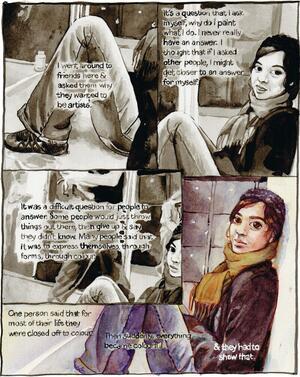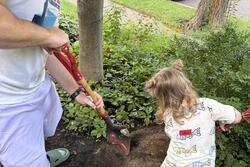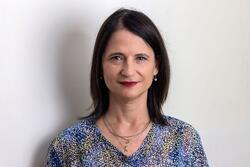Graphic Details: Interview with Miriam Libicki
Graphic Details: Confessional Comics by Jewish Women is the first museum exhibit to explore this unique niche of autobiographical storytelling by Jewish women. The touring exhibit, sponsored by The Forward, features the work of 18 Jewish women artists. The Jewish Women's Archive is interviewing each of the artists about their work and their experience as a female, Jewish graphic artist.
This week's interview is with Miriam Libicki, the creative genius behind Real Gone Girl Studios. jobnik!, her graphic novel about an American girl's experience in the Israeli army, will be available in December, 2011.
Q: How did you get into cartooning?
Miriam Libicki: I started making comics at exactly the same time that I started making jobnik!. My first comic was basically an illustrated transcription of an army diary entry, that I did for an assignment about using Adobe Illustrator my second year in university, a year after my discharge from the IDF. That five-page piece was no good as comics, from my current vantage point, but my classmates were really into it 'cause it was an unfamiliar setting for a story. Suddenly I felt that comics were the best way to tell my army stories, and that I wanted to tell my army stories, all of them. So I had to keep making the comics and learning how to make comics as I went.
Q: How does your Jewish identity influence your work?
ML: One of the reasons I am a comic artist is that it helps me to feel Jewish and connect with Jews. When I moved away from Israel, I landed in the northwest and started dating a Japanese-Buddhist-Canadian (now my husband), and the only people I knew were his friends and my fellow art school students, practically none of whom were Jewish. I felt keenly that, barring my name (which not everybody reads as Jewish, surprisingly), I could completely pass for a generic white person if I let my Sabbath & kashrut practices (idiosyncratic as they were) slip.
It was around this time when my art became full of Jewish references, and I started jobnik. Disappearing as a Jew was a horrifying and depressing idea to me, and art, without me realizing it at first, became my way to perform my Judaism, both for myself as a daily practice, and publicly, so that Jewiness was essentially linked to my public identity.
Q: Do you think the experience of being a cartoon artist is different for men and women?
ML: I think probably. In the act of cartooning, statistics bear out that men have more freedom and sanction to be selfish with their time, to shirk their housework (this goes for people living in couples, households or alone), and shirk their actual or perceived obligations to take care of others. So men, on average, probably have more time to cartoon uninterrupted. Maybe that's why we don't see lots of 500-page graphic novels from women. Thinking about it, women might be more represented in collections of short bits...Vanessa Davis, Aline Kominsky-Crumb & Phoebe Gloeckner spring to mind.
I also think that women are less represented in the super-clean, super-cold slick style of cartooning, a la Chris Ware, Dan Clowes & Adrian Tomine... which always reads as emotionally repressed and fearful to me. I'm much more drawn to art that is messy, squishy and humanistic, which is what I love about a lot of the art in this show. Plenty of men let it all hang out artistically, too, but I can think of few great women who don't. Maybe women figure that it's enough of a risk to call yourself a cartoonist, might as well not hold anything back.
Q: Tell me about your piece in the Graphic Details exhibit. What's its story?
ML: The page, "Ahbya" (above) is from a comic called "Who wants to be an art star?" It is redrawn off an assignment from third-year painting, where the assignment was "have an adventure with art, then report on it." My choice was to interview other people about their adventures, and this interviewee's choice was to interview other people about why they wanted to be artists. At the cartoon art museum, they mistakenly labeled this "self portrait" at first... I guess it is a self-portrait, two or three times removed.
Q: What's next?
ML: jobnik! is ongoing. I'm just under halfway through now. In addition, I keep doing drawn essays on whatever topic (usually Jewy) I'm interested in. I do other short nonfiction stories as well. My next story to come out will be a childhood memory, in watercolour, for Cloudscape Comics' Anthology, "21 Journeys." You can see the first two pages here.







